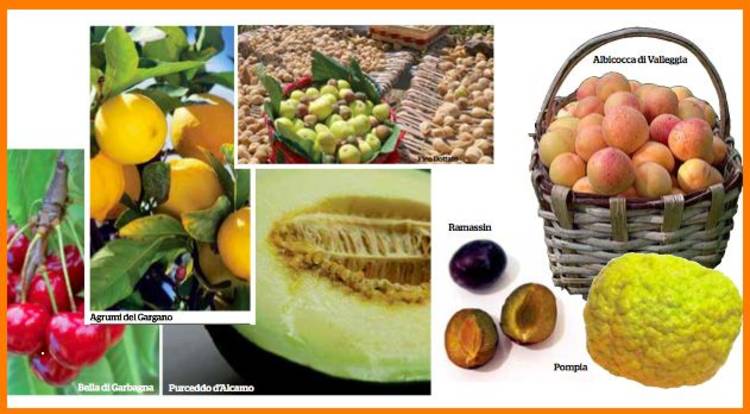


Slow Food’s “Presìdi” [2] is a ten-year-old project that safeguards biodiversity and local and traditional cultivation practices, which has led producers to adopt clean and sustainable cultivation methods, and develop an ethical market approach. You can find out more about it from October 23 to 27 at the Salone del Gusto and Terra Madre [3], the international fair for small agricultural producers hosted by Slow Food every two years in Turin. Below is a brief list of seasonal products that can be conserved for consumption year round by being transformed into sweets, pies, cakes, marmalades, candied fruit, syrups, ice cream and jellies.
La bella di Garbana (a small town in Piedmont) is a variety of cherry. Bright red with a medium-length stem, the cherry is very crunchy and particularly good for preserving in alcohol. It is also excellent for making jams and as a basic ingredient for producing liqueurs. Combined with cinnamon or cloves, it makes for an unusual but very interesting condiment for meat dishes.
Ramassin, a small blue-violet plum, is also cultivated in Piedmont. The name comes from the dialectal word for the variety known as damson, itself a word that refers to the Syrian city of Damascus, where the plum was originally grown. The plum is good eaten fresh but excellent dried, as a jam or cooked and preserved in glass jars for the winter.
Cocomerina: the affectionate, storybook nickname suits this small pear well. It is grown on the Cesena Apennines in Emilia Romagna. Given its distinct aroma and the brittleness of the fruit—which make it difficult to sell commercially—Cocomerina is very good for making jams and syrups.
Valleggia apricots are unmistakable. They are known for their thin, lightly orange skin studded with brown dots. Valleggia is also the name of the place that produces the largest quantity of them, in the province of Savoy in Liguria. Small in size, its aroma and taste are far more intense than other varieties on the market.
There was never a house in Tuscany’s Carmignano (known for good reason as “Carmignan da’ fichi”) that didn’t have at least one fig tree in its portico or garden. Many varieties still exist there. The best for making dried figs is Dottato (a variety of white fruit that makes up about 90% of the figs grown in Carmignano). After drying in the sun for four or five days, the figs are placed in a cool, dry place for 35-40 days, until a layer of sugar forms on the surface.
There are no citrus trees on Italy’s Adriatic coast, with one exception, Gargano in Puglia, where citrus fruit grows year round: Il Melangolo, a medium-small spotted fruit with a sweet and sour taste; Il Biondo del Gargano, which blossoms between April and May yet remains sweet and succulent through September; La Duretta, almost seedless with a hard and crunchy pulp; and il Femminello, the oldest variety of lemon in Italy. Fabulous marmalades, candied fruit and limoncello are made with Gargano’s citrus fruit. It can also be eaten fresh when in season. A very strange fruit, as large as a grapefruit—it can weigh up to 700 grams—Pompìa has been around for over two centuries. It is exclusive to Sardinia. The rind of Pompìa is used to make liqueurs, and the white part underneath for candied fruit; the pulp and juice are too acidic for consumption.
Purceddu d’Alcamo is a rustic variety of Sicilian melon named for its shape, which resembles a piglet (purceddu in Sicilian). The melons are one of the oldest and most important agricultural products from Trapani, Sicily, and the melon can be preserved year round.
And in Sicily, you can even find Fragoline di bosco in the mountains. These small wild strawberries come from plants brought to Sicily by troops returning from the Great War, who must have picked them somewhere the Alps, and replanted them in the rich Sicilian soil. The fruit is great for making marmalades, syrups, ice cream and jellies. The dried leaves and roots are used to make cleansing and medicinal infusions.
Source URL: http://440468.6bgr9ubv.asia/magazine/dining-in-out/articles-reviews/article/slow-food-presidi-project-special-protected-fruits
Links
[1] http://440468.6bgr9ubv.asia/files/frutta1411094150jpg
[2] http://www.fondazioneslowfood.it/presidi-italia
[3] http://www.salonedelgusto.com/